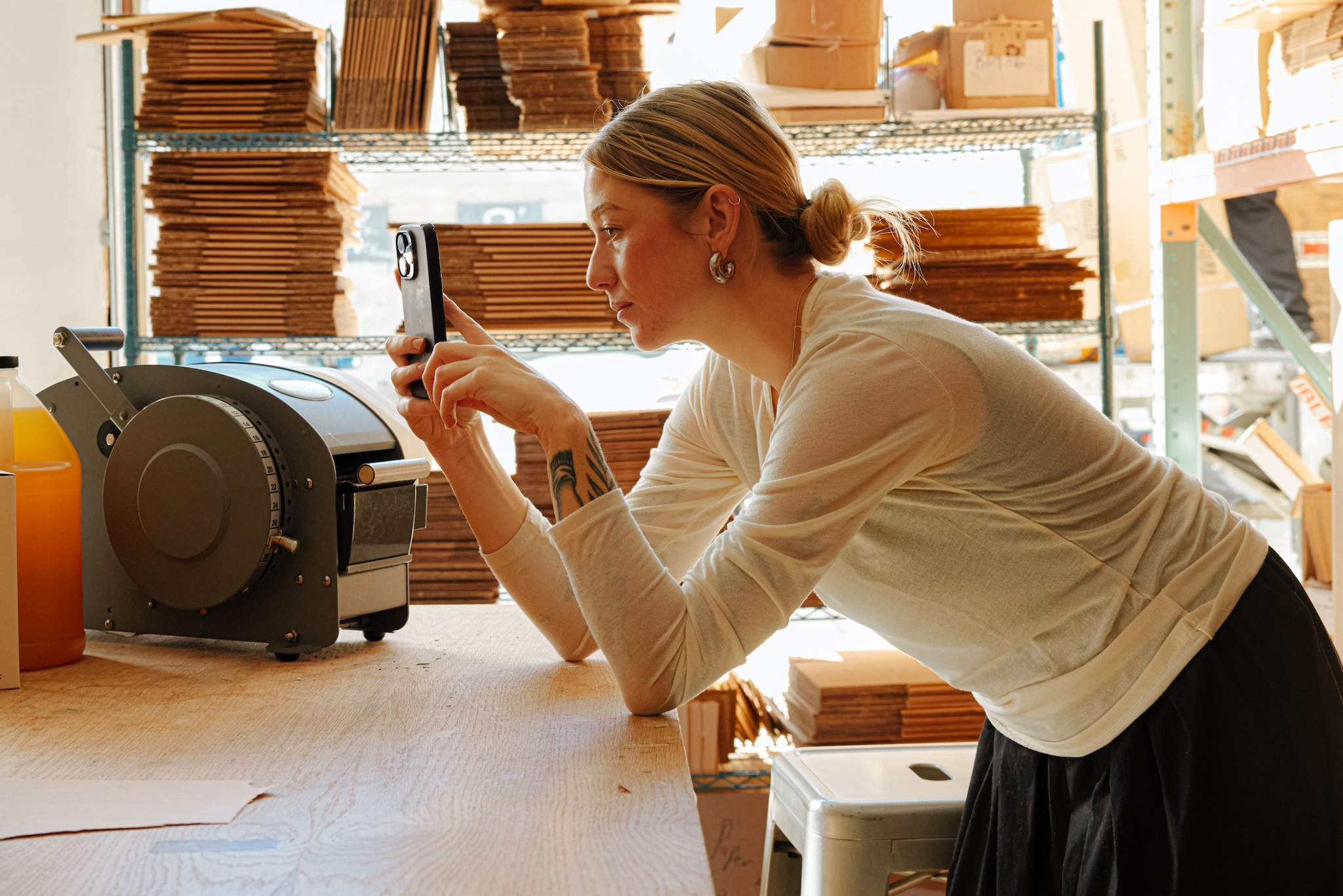
Highlights
- The easiest way to reduce waste in your supply chain is to overhaul your product packaging
- Save your products from the landfill! You can reuse, resell, and recycle old items to give them a second lease on life
- Choose greener delivery options to reduce carbon emissions. You can prioritize ground shipping over air, and consolidate items into fewer packages

You may already know that being a sustainable business means using materials and ingredients that are kind to the planet and the people who make them. But a sustainable business also takes the extra step to ensure its entire supply chain is as green and ethical as possible. That entails selecting the right materials and manufacturers, reducing its carbon footprint, and using less fuel and resources overall.
LAUDE the Label is a good example of a brand that puts sustainability first. Its garments—made by local women artisans in rural communities around the world—are free of all toxic chemicals, dyes, and synthetic fibers. Carbon neutral, Fair Trade Federation verified, and woman-owned and -operated, it is also a Social Enterprise World Forum–verified social enterprise. The majority of its products are made with organic materials like cotton and linen, and it uses only recycled materials in its packaging.
What sustainability means to shoppers
More and more consumers are becoming aware of poor working conditions and the harmful effects of waste on the planet. Awareness of these issues has led consumers to choose a more ethical approach to shopping.
There was a 71% rise in online searches for sustainable goods between 2016 and 2021, with research showing that 83% of consumers take sustainability into account when making a purchase.
In fact, customers who spend the most money online are also the most environmentally conscious. They’ll actively spend more with brands that prioritize sustainability—and they’re more likely to become loyal customers. According to McKinsey and Company, brands that make sustainability claims on more than half their stock enjoy a 32% to 34% repeat buying rate (compared with less than 30%).
Sustainability doesn’t just impact what shoppers buy, it also impacts what they don’t buy. Twenty-eight percent of consumers have stopped purchasing certain products due to ethical or environmental concerns.
What consumers look for in a sustainable brand:
- 64% want to see a reduction in packaging
- 61% want brands to reduce their emissions
- 59% want brands to use less harmful materials
- 50% want to know how to responsibly recycle products
- 50% want brands to dispose of waste responsibly
- 34% want to see fair treatment and wages for workers
Brands that tackle these issues and create a sustainable supply chain from start to finish can expect more shoppers who share their values and who become repeat customers.
How going green can help your business
With more consumers buying from brands with a clear commitment to sustainable retail, going green is now more than just a “nice to have”; it’s becoming a business imperative.
Changing your business to become more sustainable can have many benefits:
- Attract more customers. Generate sales from like-minded consumers or those actively looking to support sustainable brands.
- Slow climate change. Going green contributes to a healthier planet and means that you’re working toward a healthier future.
- Save costs. Implementing energy-efficient solutions can reduce your expenses and increase your bottom line.
- Gain a competitive edge. Stand out among your competitors by showing shoppers you share their values.
6 practical tips to reduce your business’s carbon footprint
1. Go paperless
Think about how many receipts, invoices, and documents you deal with every day—those tiny slips of paper add up! The World Counts claims there are 420 million tons of paper and cardboard produced each year and more than five million acres of forest are cut down each month.
Saving paper is a small step in the right direction. Start by:
- Using digital receipts
- Storing paperwork digitally
- Replacing manual, paper-based activities with digital versions (e.g., use an online calendar instead of a paper one)
2. Invest in clean energy options
Energy prices are only going up. Switching to eco-friendly solutions can help you save money and do your part for the planet. Find ways to lower your energy usage, like switching to LED bulbs, installing solar panels, lowering your thermostat, and switching off lights and power at the end of the day.
According to Deloitte, 62% of brands are increasing the efficiency of their energy use, and 53% are using energy-efficient or climate-friendly machinery, technologies, and equipment.
3. Reuse old products
Fast, throwaway fashion (and retail in general) is the antithesis of sustainability. Encourage shoppers to repair existing items or recycle damaged, used goods into something else. You can even have customers bring in their used clothing and resell it at a discount, like Patagonia’s Worn Wear initiative.
4. Rethink your packaging to reduce waste
The easiest way to reduce waste is to overhaul your product packaging. In fact, the EPA found that 23% of landfill waste comes from product packaging. Consumers are keenly aware of this, with 46% of shoppers expecting environmentally friendly packaging options from brands, and 42% expecting less packaging overall. By cutting out unnecessary layers of packaging—particularly materials that are difficult to recycle, like plastic—you can quickly reduce the amount of waste your business creates.
5. Practice carbon-neutral shipping
Carbon-neutral shipping describes practices that produce a net zero amount of carbon dioxide. While it’s difficult to get to net zero straightaway, you can work toward it by consolidating orders, minimizing returns, and working with shipping companies that practice green logistics—whether that’s by using electric vehicles or other environmentally friendly transport.
Your customers will thank you: 43% expect brands to use sustainable shipping options, and 35% prioritize brands with green delivery options.
6. Develop a buy-back program
The second-hand market is predicted to grow at three times the rate of the overall fashion market between now and 2027. As more consumers invest in “pre-loved” pieces, brands can capitalize on the trend by incorporating it into their business strategy and sustainability efforts.
Sell pre-bought items at a reduced rate or, if your brand isn’t set up for second-hand sales, you can develop a buy-back program that accepts returns and resells or recycles them into new products.
Make a long-term plan for a more sustainable business
Ready to reduce your carbon footprint to gain a competitive edge? Here’s how to make it happen.
- Assess your current situation. Identify your store’s current carbon footprint and home in on any areas for improvement.
- Choose an angle. Use the examples of sustainability above to decide which practices you can put in place short-term and long-term.
- Set goals and benchmarks. Decide what you want to achieve and by when. Be realistic here—it’s almost impossible to reach net zero right away, but having a reach goal can help you make solid progress.
- Check in regularly. Hold yourself accountable by regularly tracking your sustainability efforts and documenting your performance.
- Share your plans. Let customers know what you’re doing to become more sustainable—or take it one step further and ask them to join you.
You won’t become a sustainable business overnight, but taking slow, strategic steps toward an eco-friendly future will help you win more customers and set yourself apart.




